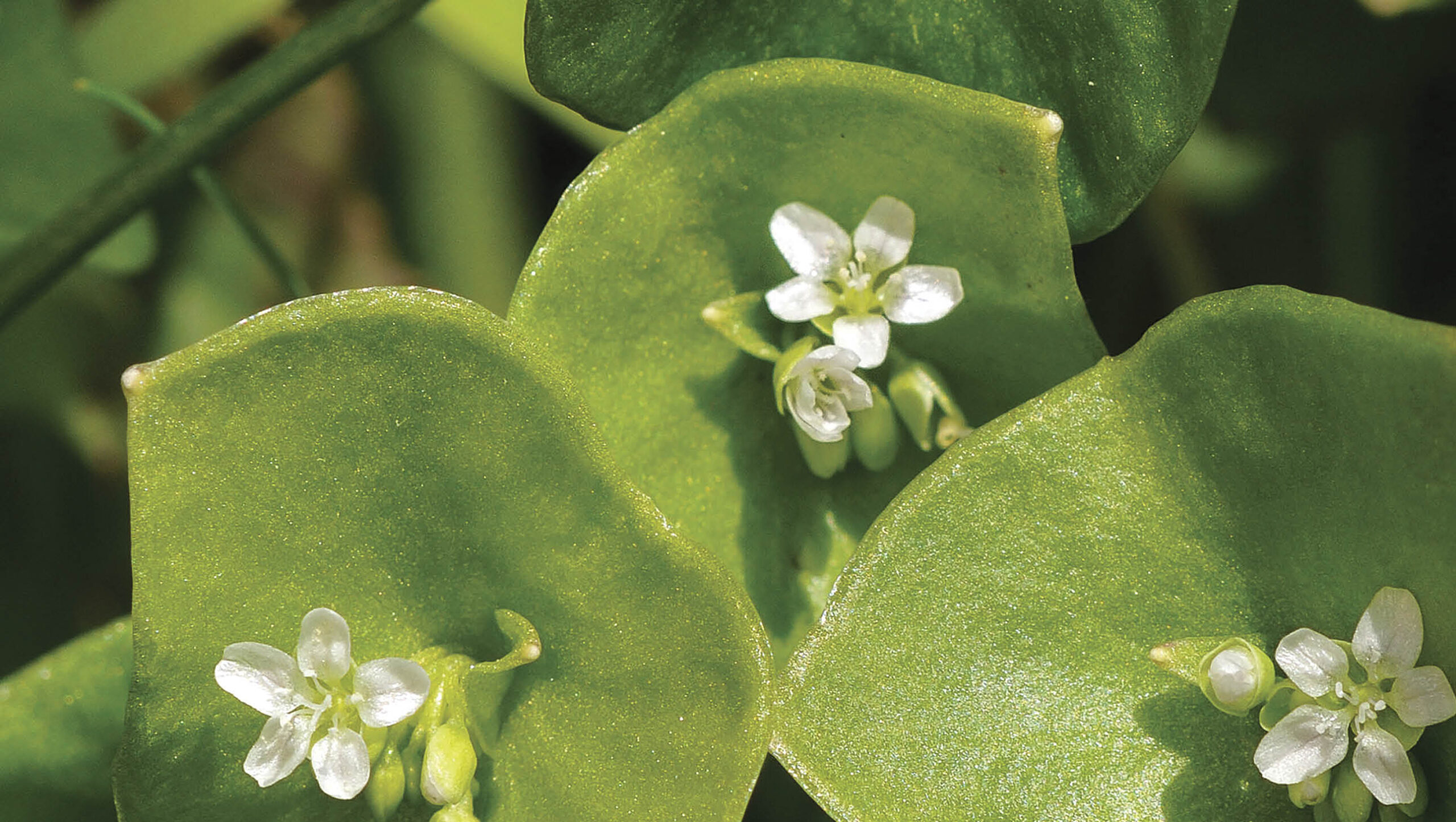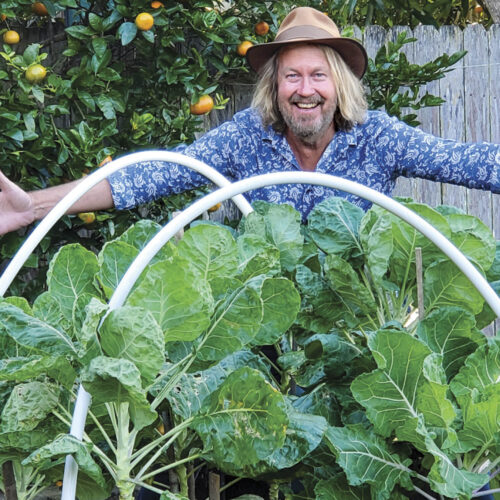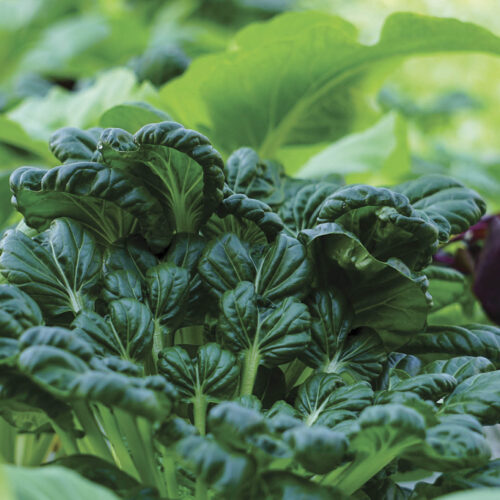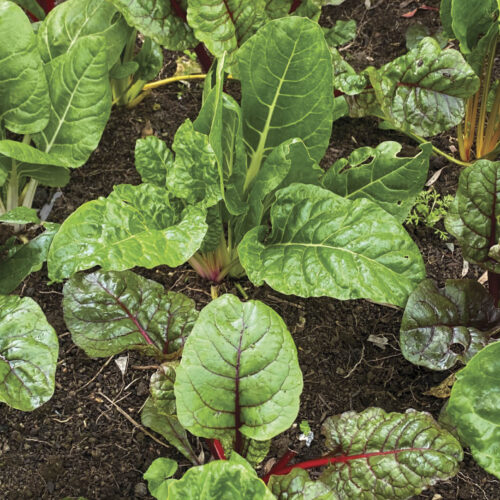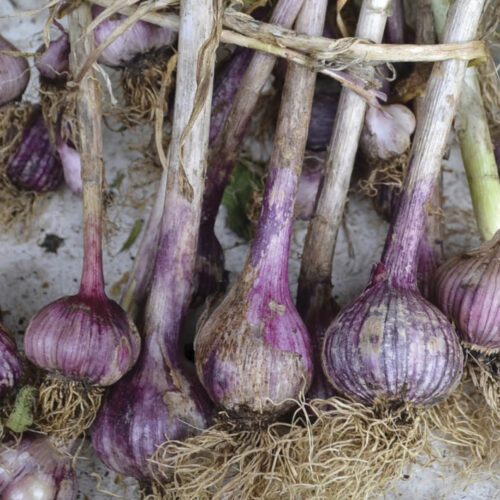Cool greens
2022-03-07T22:15:44+11:00
These cold-loving salad greens can be planted now for a healthy harvest.
Miner’s lettuce
Claytonia perfoliata
Miner’s lettuce gained its name from the miners in the 1850’s Californian gold rush, who learned from local indigenous people to eat this plant to help overcome scurvy. A small annual plant with rounded succulent leaves, miner’s lettuce has the unusual feature of the stem growing through the leaf. Leaves growing at the base of the stems are heart-shaped. All leaves can be eaten fresh or lightly cooked as you would spinach, supplying good levels of vitamin C and A. The small, white flowers and stems are also edible. Plants prefer good soil and plenty of water, are frost-tolerant and self-sow well. Raise plants from seeds sown 1mm deep direct where you want them in the garden, or raise seedlings in punnets for later transplanting. Ready to eat 40 days from sowing. Quick growing and good for small-space gardening, such as in pots, so great for renters.
- Height: 25 cm
- Width: 25 cm
- Sun/Shade: Prefers shade
- Cultivation Details: Sow seeds in autumn
CLIMATE ZONES: subtropical; arid/semi-arid; warm temperate; cold temperate
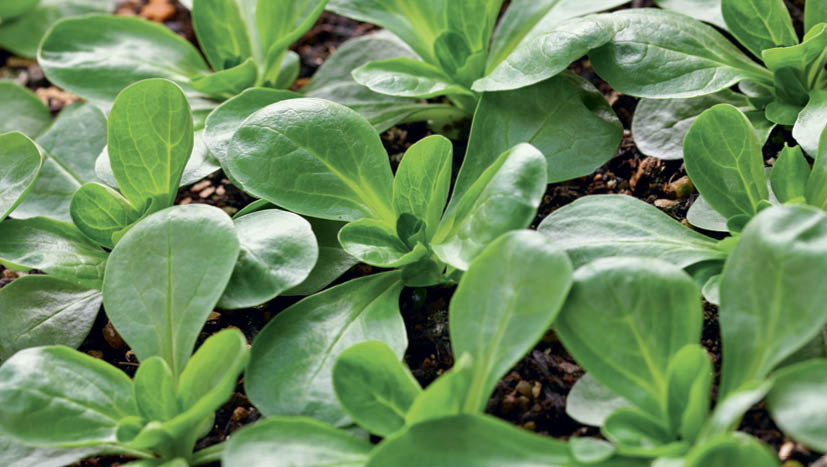
Corn salad
Valerianella locusta
A small annual plant, also known as lamb’s lettuce, with long, lush leaves and a nutty flavour. It is native to North Africa, Western Asia and Europe, where it has been foraged and cultivated for centuries. It has naturalised in North America and is popular with foragers and gardeners. It can be grown in pots, hanging baskets or other small-space gardening spots and so is a great plant for renters or those on the move. It is ready to eat 45–60 days from sowing. Sow seeds 6mm deep direct where you want them, or raise seedlings in punnets for transplanting later. You can also grow as microgreens. Pick outside leaves first to start harvest earlier and extend overall harvest time. Use leaves fresh in salads or lightly cooked in omelettes or soups. Leaves are high in vitamin C. Also look for the variety ‘Dutch’ or ‘Large Dutch’ with larger, lusher leaves.
- Height: 20 cm
- Width: 20 cm
- Sun/Shade: Full sun
- Cultivation Details: Sow seeds in autumn or early spring
CLIMATE ZONES: subtropical; arid/semi-arid; warm temperate; cold temperate
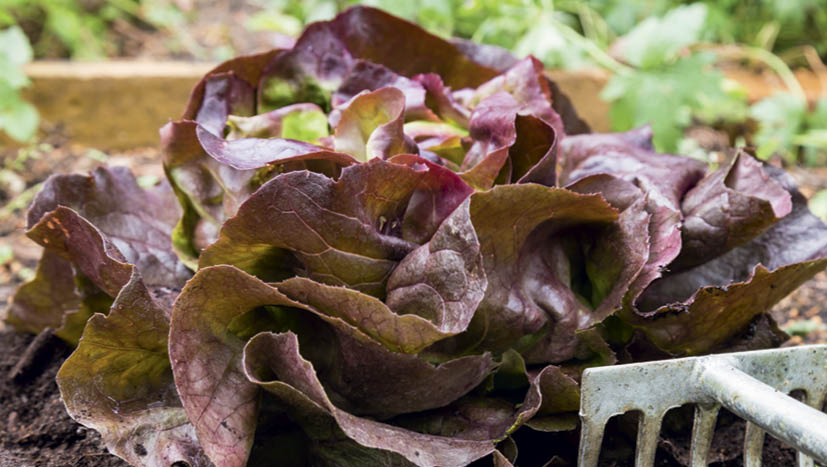
Red oakleaf lettuce
Lactuca sativa ‘Oak Leaf Red’
A versatile and reliable variety, which is great to grow at any time, this lushly coloured lettuce is sweeter when grown in cooler weather and can be harvested over a longer time. Although seeds can be sown direct, they are tiny and can dry out while germinating, so for a better result sow 3mm deep in seed-raising mix in punnets. Control seed spacing to 2cm apart when sowing by dabbing a bamboo skewer in a saucer of water before using it to pick up a seed from seeds spread out on paper. Seedlings can then be left in punnets longer to become larger before planting out into the garden or into pots. Start harvesting in around 6 weeks, taking a leaf or two from the outside first once plants develop 6 or more leaves. Grow in full sun in colder weather and in shade in warmer weather.
- Height: 25 cm
- Width: 20 cm
- Sun/Shade: Full sun or part shade
- Cultivation Details: Sow in autumn or spring
CLIMATE ZONES: tropical; subtropical; arid/semi-arid; warm temperate; cold temperate
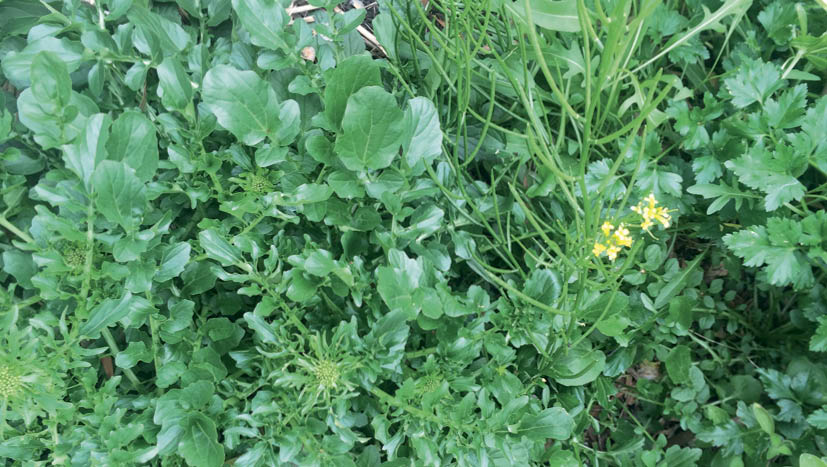
Land cress
Barbarea verna
A wonderful biennial plant for a permaculture garden, land cress (also known as upland cress and winter cress) produces peppery leaves for salad mixes, self-seeds easily so usually doesn’t require replanting, and has excellent pest controlling properties for brassicas. Great for balcony, small space, and pot gardeners. Sow seeds 5mm deep direct or in punnets The tiny yellow flowers are edible, attracting bees and other beneficial insects. To extend harvest, remove flowering stems when they appear. Land cress also can be used as a ‘dead end trap crop’ for large cabbage moths (Plutella xylostella). The moths are attracted to the plants and lay eggs on the leaves. Little do they know, though, that the leaves contain natural substances called saponins which are toxic to the baby caterpillars once they hatch and start munching.
- Height: 50 cm
- Width: 40 cm
- Sun/Shade: Full sun or part shade
- Cultivation Details: Plant seeds in autumn or spring,
CLIMATE ZONES: tropical; subtropical; arid/semi-arid; warm temperate; cold temperate
This feature was first published in OG Issue 124. A selection of back issues are available here – you can also subscribe to the magazine and get the most recent issues delivered to your door!

